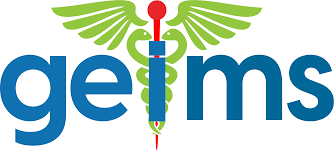General Information
Graphic Era Institute of Medical Sciences (GEIMS) represents the Graphic Era Educational Society's expansion into the critical field of healthcare education. It functions as a Private Medical College. While part of the broader Graphic Era group, which includes Graphic Era (Deemed to be University) and Graphic Era Hill University, GEIMS operates under the specific regulations governing medical education in India.
Its mission is to establish a center of excellence for medical training, research, and patient care in Dehradun, leveraging the Graphic Era group's established reputation in technical and professional education.
Key Recognitions:
Established under the Graphic Era Educational Society.
Approved by the National Medical Commission (NMC) to offer the MBBS program. This is the essential license.
Affiliated with Hemwati Nandan Bahuguna Uttarakhand Medical Education University (HNBUMU), Dehradun. Like other medical colleges in Uttarakhand, GEIMS falls under HNBUMU for curriculum standards, examinations, and degree awarding.
The parent universities (Graphic Era Deemed/Hill) hold UGC recognition and NAAC accreditation ('A+' Grade for Deemed), reflecting the group's overall quality standards.
MCI Recogination
Other LOP granted for establishment of new medical college with 150 seats for the AY 2024-25.
Campus Facilities
The Campus: Modern Medical Infrastructure
GEIMS features a dedicated, modern campus designed for medical education.
Location: Situated in Dehradun, Uttarakhand, likely near or integrated with the campuses of the Graphic Era universities.
Campus Vibe: Expect a contemporary, purpose-built environment focused on medical training, integrating academic facilities with its hospital.
Infrastructure & Facilities:
Academic Blocks: Housing pre-clinical (Anatomy, Physiology, Biochemistry) and para-clinical (Pathology, Microbiology, Pharmacology, Forensic Medicine) departments.
Learning Spaces: Air-conditioned lecture theatres equipped with modern A/V technology, demonstration rooms, and seminar halls.
Laboratories: State-of-the-art labs compliant with NMC requirements for all relevant medical subjects, including potentially a skills/simulation lab.
Library: A well-stocked medical library with textbooks, reference materials, national/international journals, and digital access.
Hospital Integration: Direct linkage and access to the Graphic Era Hospital.
Residential: On-campus hostels for students.
Other Amenities: Cafeteria, basic sports/recreational facilities, administrative offices.
Hospital & Medical Facilities
Leading tertiary care hospital attached to the institution
Healthcare Hub: Graphic Era Hospital
Integral to GEIMS is its own teaching hospital.
Associated Hospital: Yes, the college runs the Graphic Era Hospital, a multi-speciality teaching hospital located within or adjacent to the campus.
Capacity & Services: As a relatively new medical college hospital, it's designed to meet and grow its bed strength as per NMC norms (likely starting around 300-400 beds initially and expanding). It provides:
Comprehensive OPD and IPD services across major clinical specialties (Medicine, Surgery, OBG, Pediatrics, Orthopedics, ENT, Eye, Psychiatry, Dermatology, etc.).
24x7 Emergency and Casualty services.
Critical Care Units (ICU, NICU).
Modern Operation Theatres.
Diagnostic Services (Radiology including X-Ray/USG, potentially CT; Pathology & Microbiology Labs).
Blood Bank.
Educational Role: Graphic Era Hospital is the primary clinical training site for GEIMS's MBBS students. From their clinical years onward, students gain essential hands-on experience by interacting with patients, assisting in procedures, and learning clinical skills under faculty supervision.
Fee Structure
State University Affordability
Fee Structure: Private Medical Education Costs
Being a private medical college, the fees are substantial and regulated by the state government.
City Details
Hostel & Mess
Campus Living: Hostel Facilities
On-campus residence is typically mandatory for MBBS students at private medical colleges.
Accommodation: Expect separate, secure hostels for boys and girls available within the campus. Rooms are usually furnished and offered on a shared basis (double or triple occupancy is common).
Amenities: Standard facilities likely include basic furniture, 24/7 security, power backup, common rooms, warden supervision, and potentially Wi-Fi access. Proximity to the hospital ensures easy access to medical support.
Dining: Dedicated mess facilities provide regular meals (breakfast, lunch, snacks, dinner). Efforts are generally made to maintain hygiene and offer reasonably varied food options.
Cost: Hostel and mess fees constitute a significant additional annual expense. For a private medical college, expect this combined cost to likely fall in the range of ₹1.5 Lakhs to ₹2.5 Lakhs or more per year, depending on room type and amenities. Confirm the exact charges during admission.
Miscellaneous
Admissions & Career Path: The Medical Journey
Getting Admitted:
The Only Way: Admission to the MBBS program is exclusively based on the candidate's rank in the NEET-UG examination.
The Process: You must participate in the Uttarakhand State NEET Counselling, conducted by HNBUMU. Register online, pay the requisite fees, and fill in your college choices, selecting Graphic Era Institute of Medical Sciences under the appropriate quota (State Quota if eligible, otherwise Management Quota). Seat allotment is strictly based on NEET rank, category, and filled choices.
Life After MBBS:
Internship: Completion of the final year exams is followed by a mandatory one-year Compulsory Rotatory Residential Internship (CRRI) at the Graphic Era Hospital.
Career Options: Post-internship, graduates typically prepare intensely for postgraduate entrance exams (NEET-PG/INI-CET), seek positions as Medical Officers in government or private hospitals, or plan towards establishing their own clinical practice later. Direct campus placement isn't the standard model post-MBBS.
Information for NRI Candidates
Private medical colleges in Uttarakhand generally have provisions for NRI admissions.
Collage Images Gallery
Facilities & Campus Life
Well-equipped Library
Experienced Faculty
Computer Lab
Sports Activities
Heritage Campus
Frequently Asked Questions
Why Consult With Us?
- 15+ years of experience in medical education counseling
- 5000+ students successfully guided
- 50+ partner universities worldwide
- Free initial consultation with no obligation














